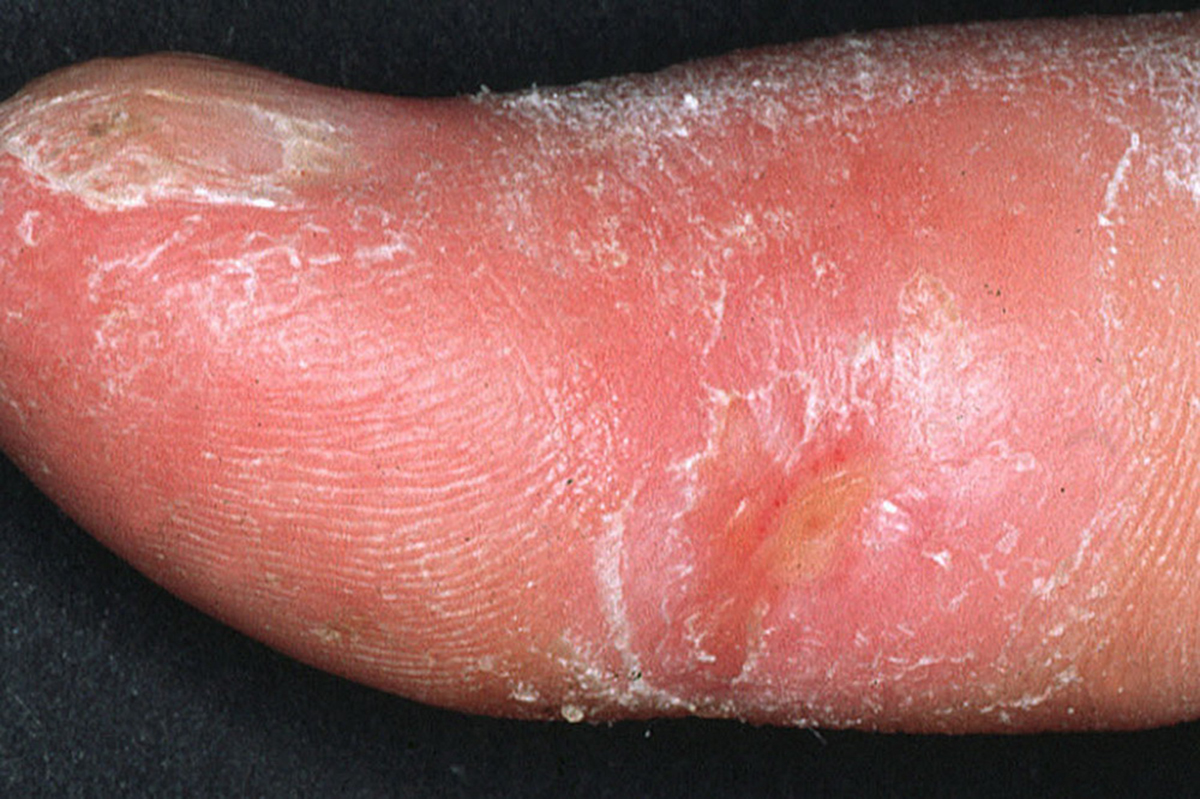Table of Contents
Diagnosis
The diagnostic process is multi-faceted. Patients presenting with symptoms that indicate scleroderma can expect to discuss their full medical history and family medical history with their healthcare provider. A physical examination will be followed by a skin biopsy and lab tests as well as lung function tests. Because some of the symptoms of scleroderma coincide with those of other diseases, the diagnostic process can be lengthy and difficult. Patients who have characteristic skin hardening are more likely to receive a timely diagnosis.

People who suspect they may have scleroderma can assist the diagnostic process by making a detailed list of the symptoms they are experiencing. These people should note whether they have Raynaud's phenomenon, frequent episodes of heartburn, swallowing problems and relatives with similar symptoms.
Treatment
While there is no definite cure for scleroderma, symptoms can be managed with varying degrees of success. In some patients with a localized type of the disease, symptoms may even disappear on their own with time. Because scleroderma comes in so many different types and affects each patient uniquely, developing an individual treatment plan may take time and a lot of effort. A variety of medications and other treatments can make the disease a little less invasive.
Patients may need to see different doctors to deal with symptoms related to their skin, heart, kidneys, lungs, digestive system, teeth, restricted movement, and speech.
Vasodilators can help prevent lung and kidney complications and deal with Raynaud's phenomenon. Medications may be prescribed to lessen heartburn, prevent infections and relieve pain. Medications that are designed to prevent organ rejection in transplant recipients have also been found to benefit scleroderma patients in some cases.
Medications play a significant role. Immunosuppressants like methotrexate, mycophenolate, and cyclophosphamide help dampen the overactive immune response, reducing inflammation. Anti-fibrotic agents, such as nintedanib and pirfenidone, target and slow down fibrotic processes, curbing skin and organ damage. Symptom management entails pain relievers, antacids for gastroesophageal reflux symptoms, and blood pressure meds for Raynaud's phenomenon and hypertension.
Physical and occupational therapy maintain joint flexibility and muscle strength, while providing strategies for daily tasks and disability mitigation. Skin care, with regular moisturizing and protection, helps manage skin changes tied to scleroderma.
Meanwhile, there are also many lifestyle adaptations that can benefit scleroderma patients significantly. Not smoking and protecting limbs from the cold is one example, while regular stretching exercises and swimming is another.
See Also: Autoimmune hepatitis: Medical treatment & Alternatives
Using specialized lotions after showering or bathing can help the skin stay as elastic as possible, but hot baths and shower should be avoided — as should string soaps that further tighten the skin. Using a humidifier is beneficial.
Appropriate dental care is very important for scleroderma patients as well. Besides learning to keep the mouth flexible, patients should ensure they brush and floss every day and keep their mouths moist. Keeping an eye out for new symptoms all the time and maintaining open communication with the healthcare team can help patients deal with complications in the best possible manner. It is also hugely beneficial for the individual doctors that make up the healthcare team to stay in contact with each other.
In severe cases, surgical interventions like joint contracture release or lung transplantation may be considered. Success rates for scleroderma treatments are variable, depending on factors like individual response, the type and severity of scleroderma, and the organ systems affected. A multidisciplinary approach, involving rheumatologists, pulmonologists, dermatologists, and specialists, is vital.
- Photo courtesy of AVM by Wikimedia Commons: en.wikipedia.org/wiki/Scleroderma#mediaviewer/File:Left_Arm_Scleroderma_Patient.jpg
- Photo courtesy of Stevenfruitsmaak by Wikimedia Commons : en.wikipedia.org/wiki/Systemic_scleroderma#mediaviewer/File:Systemic_sclerosis_finger.jpg


Your thoughts on this